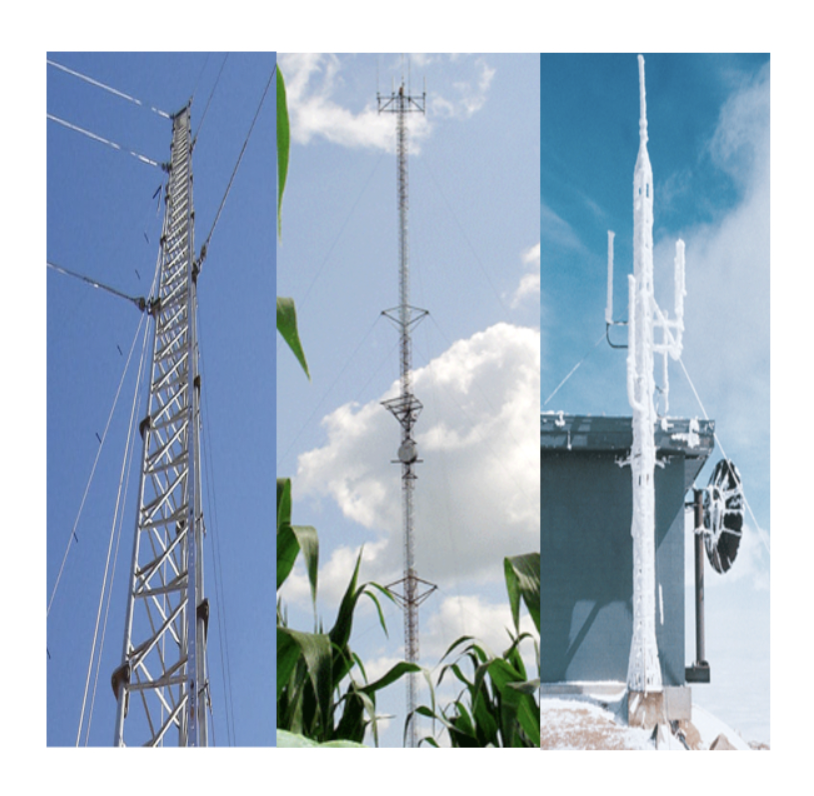Towers & Direct Embedded Poles

Towers & Direct Embedded Poles | Reliable Structures for Wireless and Industrial Applications
RSP Supply offers a wide selection of towers and direct embedded poles engineered for reliability, strength, and ease of installation. Whether you’re building a wireless communication tower, a security monitoring system, or an industrial network structure, our tower solutions are designed to provide long-lasting performance and support.
Direct Embedded Poles Also known as direct burial poles, these poles eliminate the need for anchor bases by being installed directly into the ground. This method creates a clean, professional appearance while saving installation time and reducing costs. Because part of the pole is buried, a longer pole is required to ensure proper height and structural stability.
Guyed Towers Lightweight to heavy-duty truss-style towers arranged in a triangular design and supported by multiple guy lines. Ideal for cellular, wireless internet, radio, and broadcast applications, guyed towers deliver maximum strength, stability, and easy installation in both rural and industrial settings.
Bracketed Towers Designed for building-mounted applications, bracketed towers use secure mounting brackets to attach to structures at one or more points. These are commonly used for broadband, two-way communication, and security camera systems where roof load limits restrict installation. Bracketed towers provide elevated support without the need for guy wires or large base foundations.
At RSP Supply, we provide tower systems built for performance, durability, and compliance with modern wireless and communication standards.
More Information about Towers & Direct Embedded Poles
Fold-over towers allow access to top mounted components by lowering the top portion of the tower to the ground level. Maintenance and replacements can be performed safely and when completed, the tower is returned to the upright position and locked into place.
Self-supporting towers are generally three or four sided lattice type structures and are ideal for limited-space installations. The versatility of self-supporting towers make them ideal for cellular, wireless, meteorological, radio, broadcast and so on.
Grounding Series Part 12 Tower Grounding
It is important to ensure that when grounding any type of tower structure, the grounding electrode conductors be sized properly so that they can handle any potential load that the tower may encounter.
If the tower is constructed of any type of metallic material, it is required by the National Electric Code (NEC) that the tower be incorporated into the grounding electrode system and be bonded to any auxiliary or supplementary grounding infrastructure. This bonding would need to occur, so that the tower’s grounding electrode conductors tie into the main sight ground or directly into Earth ground, depending on the situation.
When installing the grounding conductors for any type of tower, it is important to ensure that the conductor be run as straight as possible, avoiding any bending in the material.
This can help reduce the amount of impedance in the conductor. If bending is necessary in the grounding electro conductor, a minimum bend radius of at least eight inches should always be maintained. It is also recommended that any conductors that are being used are multi stranded, individually tinned, copper conductors.
Wherever possible these grounding conductors should be installed in one continuous length in order to reduce the overall impedance of that conductor.
Splices should be avoided whenever possible.
If joints or splicing are necessary, special welding techniques should be used in order to properly fuse the two different conductors together. It is always recommended that where the grounding electro conductor meets the metallic tower structure, the same special welding technique should be used. This welding technique is referred to as exothermic welding.
The best system to use for grounding a tower is to install a ground ring.
A ground ring is a system of conductive grounding materials that encircle the tower. It is important that the main grounding conductor be no smaller than two gauge, bare copper wire and that this conductor is at least two and a half feet below the soil surface and have direct soil contact. Grounding rods and plates should also be used with the grounding ring and should be bonded every ten to fifteen feet, depending on the situation. A minimum of one grounding electrode conductor should be connected back to the tower itself.

